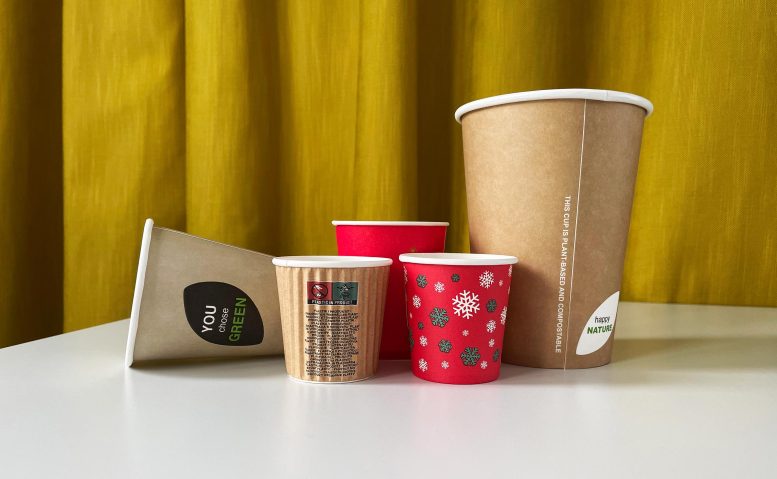
Paper cups are replacing plastic cups on the market. However, these supposedly “eco-friendly” alternatives can also be toxic to living organisms due to their plastic linings. Credit: Olof Lönnehed
Replacing single-use plastic cups with paper ones is problematic. Researchers at the University of Gothenburg show that a paper cup that ends up in nature can also cause damage as it also contains toxic chemicals.
Reports of plastic pollution contaminating all parts of the Earth and all living things have accelerated a shift to alternative materials. The coffee latte you take with you from the kiosk on the corner now comes in paper cups, sometimes even with paper lids. But that cup can also harm living organisms if it ends up in nature. Researchers at the University of Gothenburg show this in a research study that tested the effect of disposable cups made of different materials on the larvae of the butterfly mosquito.
“We left paper cups and plastic cups in wet sediment and water for a few weeks and followed how the leached chemicals affected the larvae. All of the mugs negatively affected the growth of mosquito larvae,” says Bethanie Carney Almroth, Professor of Environmental Science at the Department of Biology and Environmental Science at the University of Gothenburg.
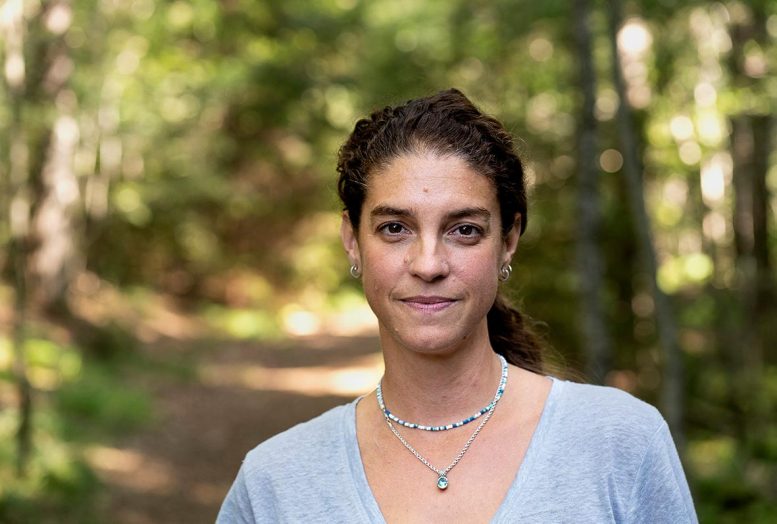
Bethanie Carney Almroth, Professor of Environmental Science at the University of Gothenburg. Credit: Johan Wingborg
The Composition of Paper Cups
Paper is neither fat- nor water-resistant, so paper that is used in food packaging material needs to be treated with a surface coating. This plastic protects the paper from the coffee in your hand. Nowadays, the plastic film is often made of polylactide, PLA, a type of bioplastic. Bioplastics are produced from renewable resources (PLA is commonly produced from corn, cassava, or sugarcane) rather than fossil fuels as is the case for 99% of plastics on the market today. PLA is often regarded as biodegradable, meaning that it can break down faster than oil-based plastics under the right conditions, but the researchers’ study shows that it can still be toxic.
“Bioplastics do not break down effectively when they end up in the environment, in water. There may be a risk that the plastic remains in nature and resulting microplastics can be ingested by animals and humans, just as other plastics do. Bioplastics contain at least as many chemicals as conventional plastic,” says Bethanie Carney Almroth.
Potential Health Hazards of Food Packaging
“Some chemicals in plastics are known to be toxic, others we lack knowledge about. Paper packaging also presents a potential health hazard compared to other materials, and it’s becoming more common. We are exposed to the plastics and the associated chemicals via contact with food.”
Bethanie Carney Almroth and her research colleagues report their results in a scientific article in Environmental Pollution. In the article, they reason about the major shifts that are required to mitigate the continuing damage to the environment and threat to our health caused by the plastics pollution crisis.
“When disposable products arrived on the market after the Second World War, large campaigns were conducted to teach people to throw the products away, it was unnatural to us! Now we need to shift back and move away from disposable lifestyles. It is better if you bring your own mug when buying takeaway coffee. Or by all means, take a few minutes, sit down, and drink your coffee from a porcelain mug,” says Bethanie Carney Almroth.
International Efforts to Combat Plastic Pollution
Right now, work is underway through the UN where the world’s countries are negotiating a binding agreement to end the spread of plastics in society and nature. Professor Carney Almroth is a member of a council of scientists, SCEPT – Scientists Coalition for an Effective Plastics Treaty, which contributes scientific evidence to the negotiations. The council calls for a rapid phasing out of unnecessary and problematic plastics, as well as vigilance to avoid replacing one bad product with another.
“We at SCEPT are calling for transparency requirements within the plastics industry that forces a clear reporting of what chemicals all products contain, much like in the pharmaceutical industry. But the main goal of our work is to minimize plastic production,” says Bethanie Carney Almroth.
Reference: “Single-use take-away cups of paper are as toxic to aquatic midge larvae as plastic cups” by Bethanie Carney Almroth, Alice Carle, Marion Blanchard, Francesca Molinari and Agathe Bour, 16 May 2023, Environmental Pollution.
DOI: 10.1016/j.envpol.2023.121836



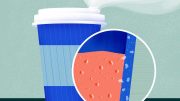


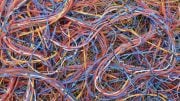

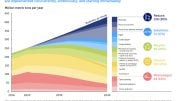
I know the conclusions of this study are wrong, because when I argued the same thing and contacted the government, I was ignored and the plastic cups were actually banned outright. Authoritarian environmentalists wouldn’t force people by law to poison themselves and the environment.
Because they still keep putting all those petrochems in the paper to make it better as well. Stop putting in chems to the natural paper, and you won’t have these problems. BECAUSE THEY STILL KEEP PUTTING ALL THOSE PETROCHEMS INTO THE PAPER TO MAKE IT BETTER AS WELL. STOP PUTTING IN CHEMS TO THE NATURAL PAPER, AND YOU WON’T HAVE THESE PROBLEMS. AHHHHHHHH!
Check out paper manufacturing. You would be shocked how toxic the process can be. We don’t write on papyrus or velum anymore. The effluent from manufacturing paper is extremely toxic, particularly from the bleaching process, producing the worst chemicals like dioxins. More than quality, it’s necessary to read ink on the page. The funniest thing about it, recycling paper is even more toxic, producing far worse paper, while the paper industry normally plants trees to make new paper. But of course authoritarian environmentalists wouldn’t force us to recycle paper into bad paper in an unbelievably toxic and expensive way that poisons us and the environment. Hey let’s all drink coffee out of it too, and coat it with polyethelene so it temporarily holds liquid and is secretly still plastic!
cups should be banned use real cups bring your own.